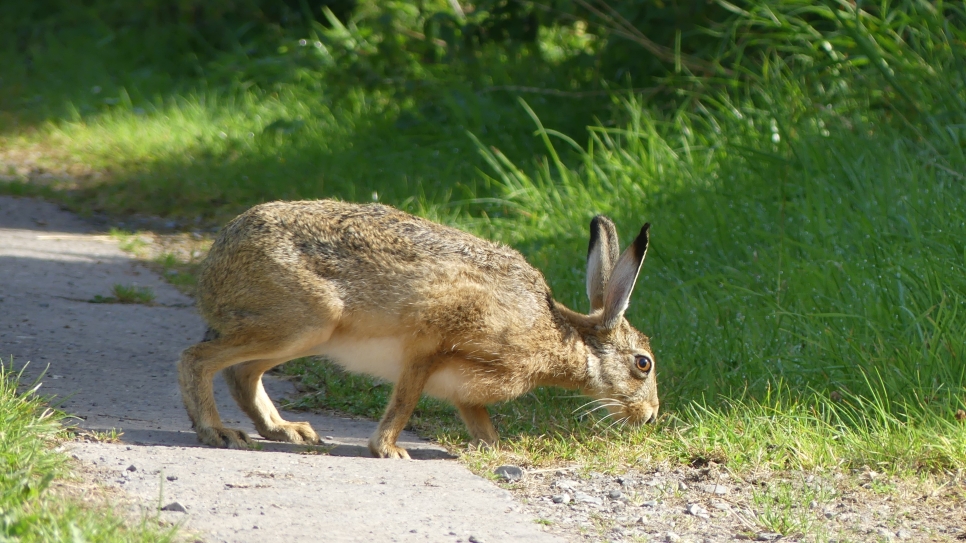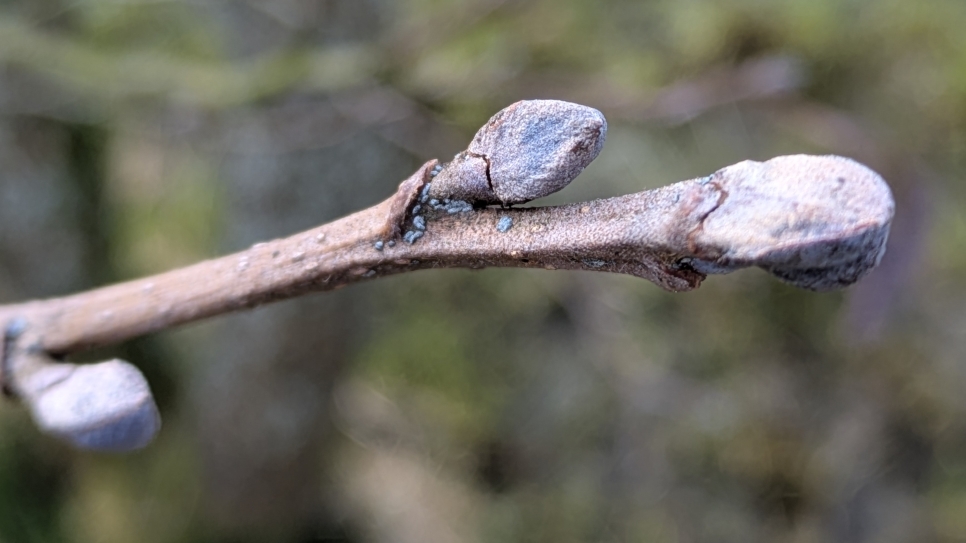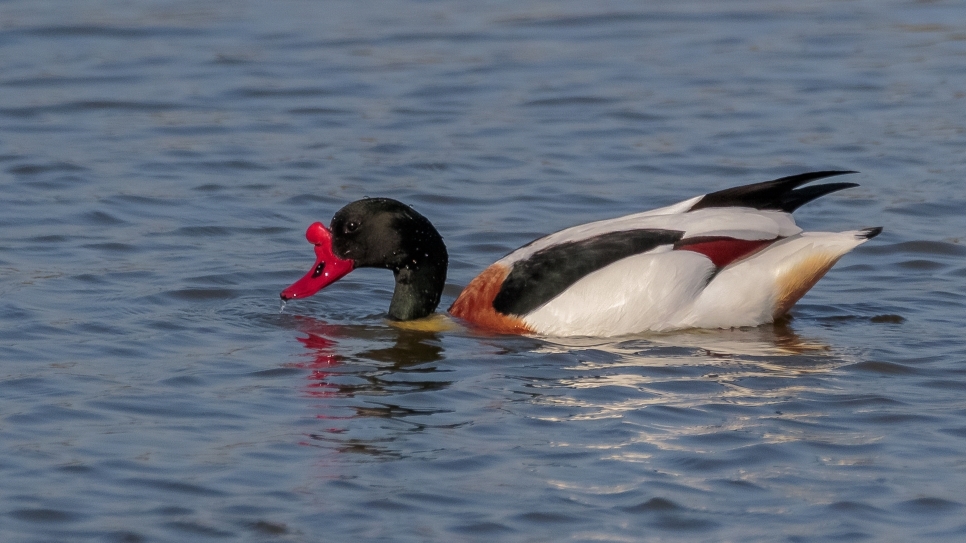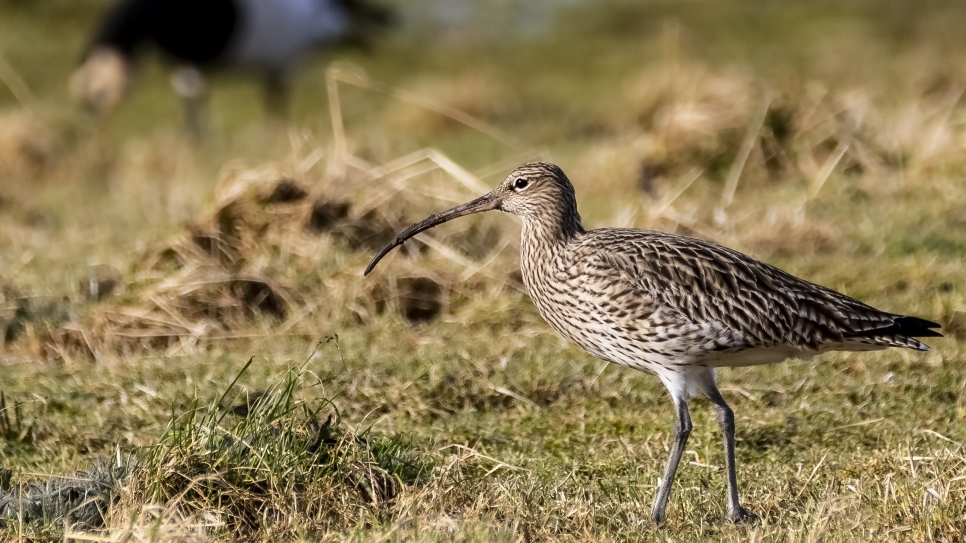Flooded fields and red berries
The extreme rainfall that the area has experienced this week saw most birds hunkered down for a few days before they began exploring the vast new expanses of lying water.
The extreme rainfall that the area has experienced this week saw most birds hunkered down for a few days before they began exploring the vast new expanses of lying water. Whole fields have become lakes, and various birds have appeared on the reserve which more often feed or roost nearer the Lochar Water, or out on the mudflats.
Up to 20 redshank have been seen wading through puddles on the folly, and 200 pintail in their smart winter suits have gracefully flown into the flooded fields. Even more black-tailed godwits have moved over from the mouth of the lochar, and so our regular roost of ~80 birds is closer to 200 this week. Some of the floods are even deep enough for tufted duck and little grebe to dive in, who have moved over from the whooper pond! Flocks of up to 25 shoveler have been seen flying, and many more gulls than usual have been spending time on the reserve too. These are mainly black-headed and common gulls, with some greater black-backed roaming about for good measure too.
Long-tailed tit, yellowhammer and goldcrest have all been seen along the avenues, and our hawthorn hedges are now covered with recently arrived redwings, with a few fieldfare too. It's deceptively difficult to catch a detailed look at these migrant thrushes, as they continuously flit from one bush to the next, but the large, spaced out flocks and high pitched 'tsseep' call of redwings helps identify them quickly.
Marsh harrier have been seen again regularly this week, after flying under the radar for a little while. Hen harriers remain a staple, delighting visitors over the merse, and a sparrowhawk keeps bursting out of hedges in it's typically unpredictable manner. One of our staff also saw two barn owls at the visitor centre before carrying out a dawn goose count, which was a great reminder that these birds are in the area. Other reports place them hunting over near powhillon.
We still have about 40-50 whooper swans regularly attending our commentated feeds, although new ringed birds do keep arriving. We welcome back Nobby Nobkin, Lucky Linda and her unnamed partner, who have returned with one cygnet in tow. A second mute swan cygnet has also joined the birds at our feeds. These boost our proportion of juveniles slightly, but it has seemed quite a quiet year so far on the breeding front. Barnacle geese also still number around 8500.
This week's high tide times are:
Mon 1/11 - 0909 2124
Tues 2/11 - 0955 2209
Wed 3/11 - 1036 2251
Thurs 4/11 - 1117 2333
Fri 5/11 - 1158 -
Sat 6/11 - 0016 1239
Sun 7/11 - 0100 1323
Photo credit: Alex Hillier
As well as this week's highlights, you are likely to see the following on the reserve:
Birds | Mammals | Butterflies | Damselflies & Dragonflies | Named Whooper Swans |
Mute Swan | Hare | Red Admiral | Large Red | Yellow ZHD - Renouf |
Greylag geese | Roe Deer | Meadow Brown | Blue-tailed | Yellow ZND - Rosie |
Canada Geese | Weasel | Green-veined White | Azure | Yellow ZLD - McMurdoston |
Shelduck | Stoat | Large White | Common Blue | Orange XLX - Linda Graham |
Mallard | Fox | Small Tortoiseshell | Common Darter | Yellow ZLS - Handel |
Gadwall | Otter | Yellow ZXP - Mary | ||
Shoveler | Red APR - Elsie Barbara | |||
Teal | YFB - Eric Anthony | |||
Pheasant | Yellow ZHV - Wampool | |||
Cormorant | Yellow ZJS - Hendrik | |||
Little Egret | Orange YSJ - Sheldon Whooper | |||
Grey Heron | Orange YTF - Odette | |||
Buzzard | Orange XKU - Solway Siren | |||
Kestrel | Orange XLL - Chris | |||
Peregrine Falcon | Yellow ZLA - Beatrice | |||
Merlin | JZI - Inigo Montoya | |||
Sparrowhawk | Yellow ZJX - Polly | |||
Moorhen | Yellow ZVL - Nobby Nobkin | |||
Oystercatcher | Yellow ZNP - Lucky Linda | |||
Lapwing | ||||
Common Sandpiper | ||||
Redshank | ||||
Black-tailed Godwit | ||||
Curlew | ||||
Snipe | ||||
Black-headed Gull | ||||
Common Gull | ||||
Herring Gull | ||||
Great Black Backed Gull | ||||
Wood Pigeon | ||||
Collared Dove | ||||
Great Spotted Woodpecker | ||||
Skylark | ||||
Sand Martin | ||||
House Martin | ||||
Barn Swallow | ||||
Meadow Pipit | ||||
Pied Wagtail | ||||
Dunnock | ||||
Robin | ||||
Song Thrush | ||||
Blackbird | ||||
Blackcap | ||||
Chiffchaff | ||||
Wren | ||||
Great Tit | ||||
Coal Tit | ||||
Blue Tit | ||||
Long-tailed Tit | ||||
Treecreeper | ||||
Jackdaw | ||||
Rook | ||||
Carrion Crow | ||||
Raven | ||||
Starling | ||||
House Sparrow | ||||
Tree Sparrow | ||||
Chaffinch | ||||
Linnet | ||||
Goldfinch | ||||
Greenfinch | ||||
Reed Bunting |



